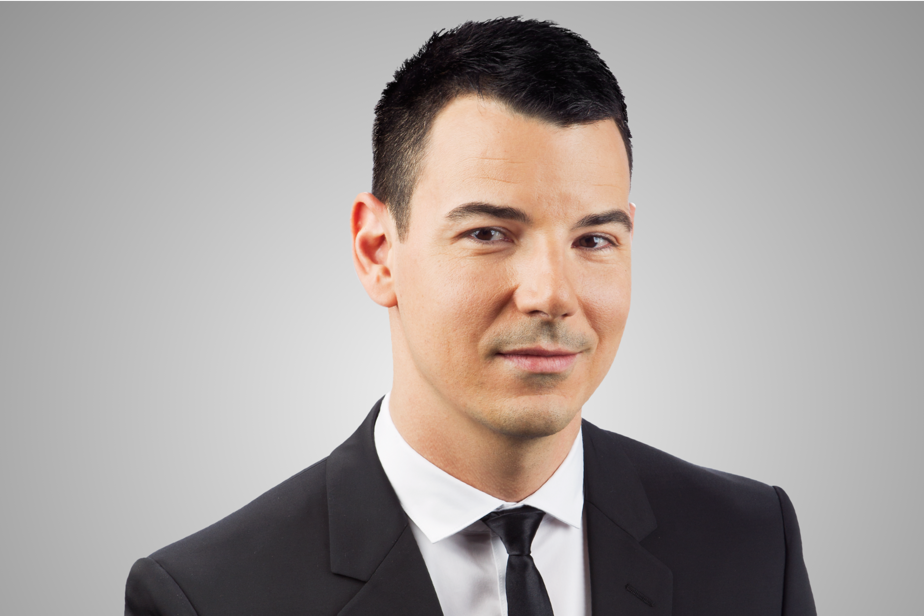I will not repeat what my colleagues have already written about the importance of the fight led by Chantale Daigle, in the summer of 1989, for the right to abortion.
The story of this 21-year-old waitress at a Giorgio restaurant near the Olympic Stadium in Montreal remains sadly relevant, as laws are passed in the United States and Europe to restrict the options of pregnant women. .
The vintage series Disobey: Chantale Daigle’s choicewhich takes place between November 1988 and December 1989, becomes, alas, a series well of its time, a time when struggles won for nearly 35 years are reversed.
It’s very good, what the team behind this production has meticulously concocted, with remarkable attention to detail.
The first episode – of a total of six – lands on the Crave platform on Wednesday, and the others will land there at the rate of one per week until April 12.
In the main roles, Éléonore Loiselle and Antoine Pilon are killing the small screen. We tend to forget that Chantale Daigle was only 21 when she was sucked into this gigantic media whirlwind.
Éléonore Loiselle, who plays Astrid in The breakawayperfectly reflects the naivety, simplicity, candor, but also the tenacity of this restaurant waitress who was not equipped to change Canadian legal history with a capital H.
Antoine Pilon inherits a score that is more difficult to render. His mustachioed Jean-Guy Tremblay, 25, is a real asshole but doesn’t have to be just that. We have to believe that Chantale Daigle, who met this Don Juan of the poor in November 1988 in a Radio Shack, could have fallen in love with this violent manipulator. And it is successful.
The first episode introduces us to a friendly, attentive and handsome Jean-Guy Tremblay (he was an underwear model, yes). Slowly, Jean-Guy Tremblay, who lies as he breathes, tightens his grip around the good Chantale. He isolates her, watches her and constantly throws fits of jealousy at her.
Chantale Daigle, who lives in a semi-basement, repeats in the episodes that her spouse does not beat her, but that he “shakes” her and that he stirs her tomato. Domestic violence awareness was not what it is today.
The authors Daniel Thibault and Isabelle Pelletier, the creators of Breakups, know how to write good courthouse scenes. There are many in Disobey, but they are not didactic or static. We look at the twists and turns of the Chantale Daigle case at the Court of Appeal and then in the Supreme Court and we say to ourselves that it cannot be a 100% true story. It is. A few character names have been touched up, not the facts, all true.
Inexperienced, Chantale Daigle’s lawyer, Me Daniel Bédard (Éric Robidoux), referred by legal aid, had no idea what (complicated) mess he was getting into. In contrast, Jean-Guy Tremblay’s prosecutors, camped by Patrick Hivon and Jean-François Pichette, were formidable litigants, in addition to being connected to pro-life movements.
The moments when the series dwells on Chantale Daigle’s family throw a super interesting light on the other side of the battle of the courts. Chantale grew up in Chibougamau surrounded by two protective brothers and a caring big sister (excellent Juliette Gosselin) who loved each other. Her father Florent (Denis Trudel) supported her throughout her crusade. His mother Aline (Sylvie Dubé) too.
They hold each other tight, the Daigles. During the first trial, which took place in Val-d’Or, for lack of available judges elsewhere in the province, Chantale Daigle slept in her big brother’s trailer, parked on a campground.
Crimped hair, high-waisted jeans, roller phones, sweaters with shoulder pads and brown basements where it smokes like firefighters, we recognize the 1980s well in Disobeywithout it becoming the central point of the series.
Producers Alexis Durand-Brault (who also directs the six episodes) and Sophie Lorain had the intelligence not to butter it too thick in nostalgia, which would have been a distraction from the main subject.
On this subject, Alexis Durand-Brault did a test on camera with the famous red dress with a white collar worn by Chantale Daigle, but the result was too costume, too Creton in The little life. The garment has been put away.
Good choice, on the other hand, than that of using Closer Together of The Box in the first episode.
Neither Chantale Daigle nor Jean-Guy Tremblay, who will only have been in a relationship for seven months, in total, were consulted during the production of the miniseries.
Today the mother of four children, Chantale Daigle would have changed her name and would live in Chibougamau, her hometown.
Moved to Western Canada, Jean-Guy Tremblay spent five years behind bars in Alberta for beating and harassing two ex-spouses in 1999. He remarried in November 2011 and celebrated his wedding in a restaurant -bar in the Duberger district, in Quebec.
He still wouldn’t be the brightest light on the Christmas tree.
